

1) At end 2005, the amount of liquid hydrocarbons produced since 1859 is (±1-2%) 1 000 Gb (1 000 billion barrels).
2) Likely, the remaining reserves are :- 1 000 Gb of oil, - 500 Gb of extra-heavy, - 250 Gb of liquids, - 250 Gb of refining technology + synthetic oils from coal and biomass
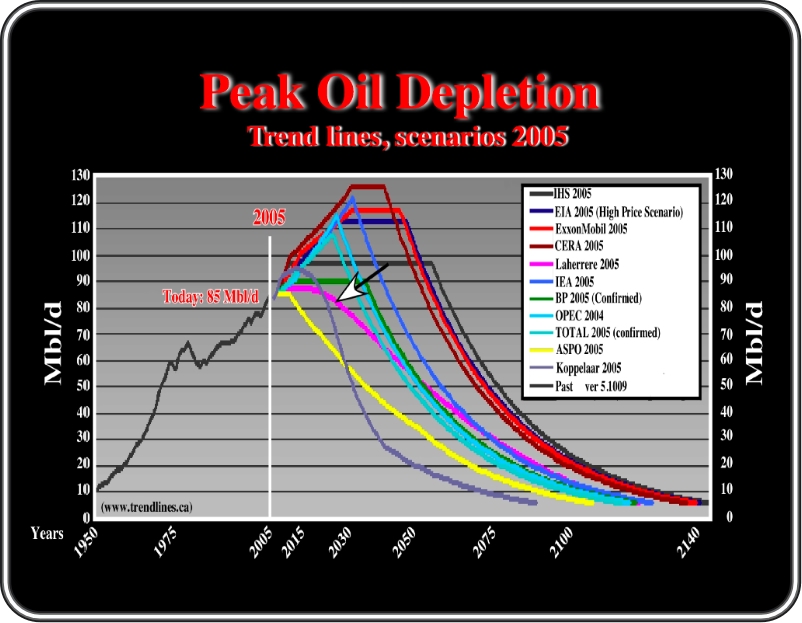
Our prediction (in purple) is slightly optimistic than ASPO 2005 (in yellow), but largely pessimistic when compared with the predictions proposed by conventional petroleum-related organizations, such as IHS, EIA, PB, Total, OPEC, etc.
3) In early 2005, estimated global oil demand was forecast to reach 86 Mb/d (millions barrels a day) or more by the end of the year. Demand increases had exceeded forecasts each year from 2002 to 2004.
4) Sooner or later, the worldwide use of oil must peak, because oil, like the other two fossil fuels, coal and natural gas, is non-renewable.
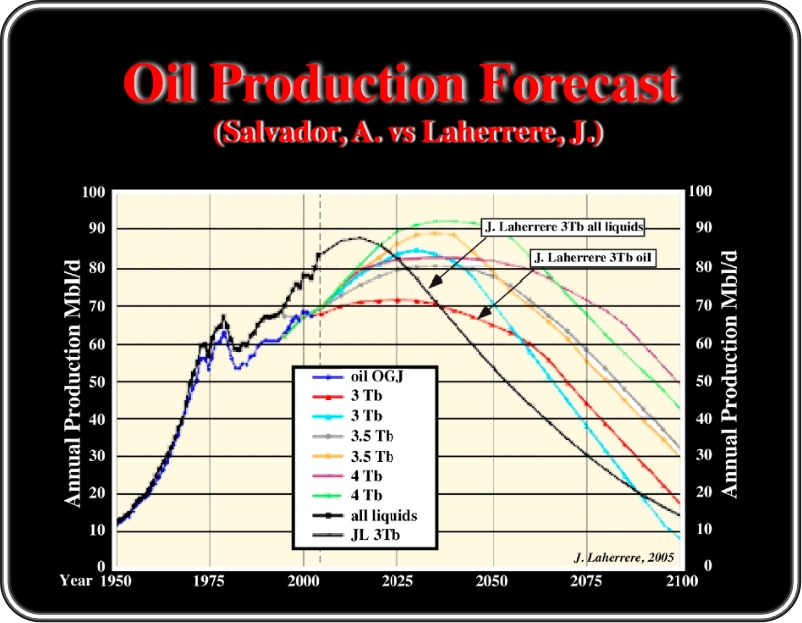
A. Salvador’s recent paper is quite optimistic in relation to our prediction. However, we believe our data is technical data and so less influenced by politics whether of Governments or Oil companies. All our liquids and oil curves are made for a 3 Tbl (3 000 Gb) of ultime reserves.
5) The main reason that many oil experts have scoffed at claims that the peak oil might occur sooner than later is their belief in the superabundance of Saudi Arabia’s oil resources.
6) Development is now underway on certain a number of giant oil fields around the world (Kasaghan, Gulf of Mexico, West Africa), but none of these projects is expected to produce in excess of 200-250 kb/d.
7) The volume of water produced from the world’s oil fields is now estimated to exceed 200 Mb/d, that is to say, nearly 3x the volume of the oil produced. Oil wells in US produce more than 7 barrels of water for each barrel of oil. (M. Simmons, 2005).
8) The annual cost to US producers for disposing of this produced water is USA $ 5-10 G. Worldwide, the cost to handle superfluous water is estimated to be around USA $40 G. (M. Simmons, 2005).
In addition, please don’t forget what they said:
- Yves Cochet (2005):- A barrel of oil has a potential energy equivalent to 35.000 hours of human work.
- Taking into account European gasoline taxation, the production price of human mechanic work is USA $200 the barrel.
- Using humans to do the same work (USA $ 20/hour), the price will be roughly $200.000, i.e. 1000x more expensive than oil plus engine.- J. Laherrère (2006):
- By the end of 2005, an European worker (minimum wage) should work 4-5 hours to buy a barrel of oil, while an American worker should just work 2-3 hours to buy it .
- In 1980, the same European worker should work eleven (11) hours to buy a barrel of oil and the American four (4). In other words, beginning 2006, a barrel of oil was roughly 2.5 times less expensive than in 1980 (see plate below).
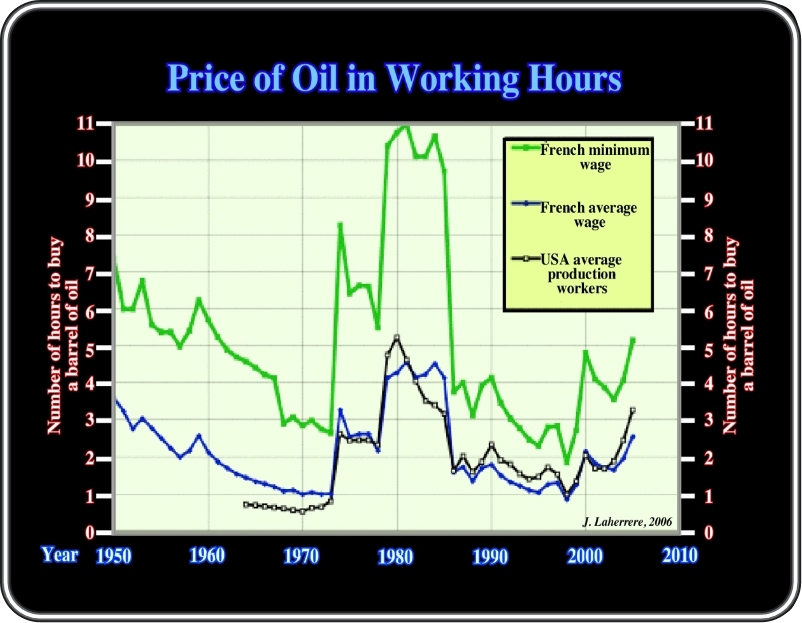
This plot indicates the price of the oil (number of working hours need to buy a barrel of oil) dropped since 1950 till 1972-1973. Then, abruptly, it jumped to reach the maximum during the 80s. Since 1986-87, the price, again, abruptly fall till 1998 to reach 1.5-2.5 hours. Since then, it started to rise till today (more or less 5-6 working hours).
- M. Simmons (2005):
The most urgent energy question for the world, as oil consumption fast approaches 85 Mb/d, involve the sustainability of Saudi Arabia’s oil production.
Saudi Arabia clearly seems to be nearing or is at its peak output and cannot materially grow its oil production. In all probability, output peaked in 1981 at an unsustainable level of about 10.5 Mb/d.
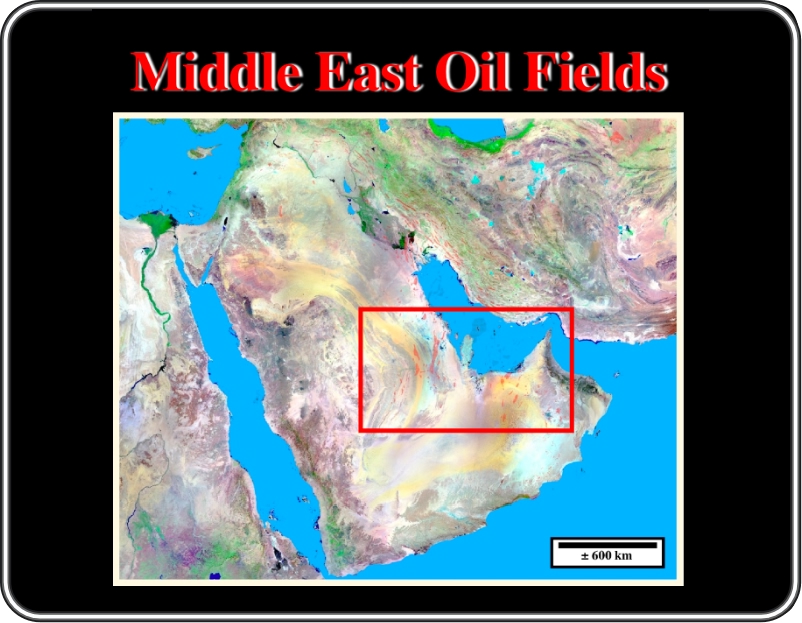
According to Campbell (2002), the total Middle East reserves are: (i) Discovered Reserves around 758 Gb, (ii) to Yet to Find 47 Gb and (iii) Ultimate 805 Gb. Such values represent respectively 43%, 33% and 42% of the total World Reserves. Saudi Arabia represents roughly 40% of Middle East reserves. On this map, all small red patches correspond to oil fields.
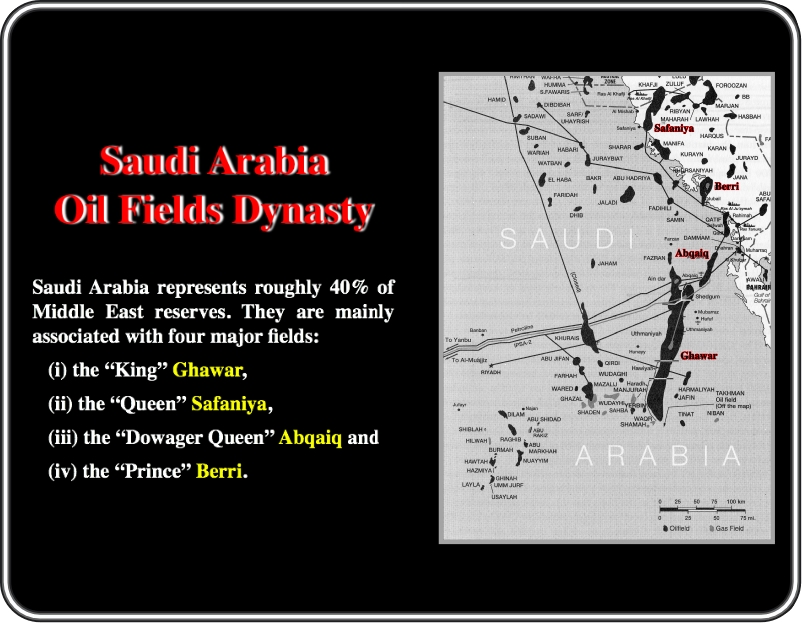
In the majority of petroleum basins a hierarchy of oil fields is often recognized: (i) a King, (ii) a Queen or perhaps two or three, (iii) a handful of Earls or Lords (5 or 10) and (iv) a larger number of Commoners or Peasants. Ghawar, King of all Kings, discovered in 1948 and onstream in 1952, is the largest oil field in the world. It has now produced over 55 Gb. Its oil accounted for 55 to 65% of Saudi Arabia’s total production.
Summing up:
Ignoring the risks posed by the oil peak of Saudi Arabia any longer is folly.
Applying the Basic Principles ruling the Nature on the available data base: OPEC, OGJ, Petroconsultants, IHS, BP review, World Oil, USDOE/EIA, etc, the several conjectures on Exploration / Production can be postulated.
Conjecture 1
Publishing reserves is a political act. In addition, there are several category of reserves.
Conjecture 2
Field growth corresponds mainly to bad practices of reserves reporting.
Conjecture 3
Technological progress lead to faster and cheaper production, but has not much impact on conventional reserves. Technological progress is needed for unconventional resources.
Conjecture 4
Oil price will raise unconventional resources, not yet listed as reserves, but it does not increase conventional resources.
Conjecture 5
Cheap oil in peak soon in North Sea and in Non-OPEC countries. For the world, it peaks probably this year (2006).
Conjecture 6
Except in Eastern deepwater of South Atlantic margins, where large fields (±0.5 Gb) are likely, Future Short Term Reserves are those that in the past (i) have been missed, or (ii) have not been taken into account.
Conjecture 7
Long Term Reserves will be chiefly associated with few foredeep, fold belts and subsalt traps, in which seismic data is difficult to acquire and often useless.
Conjecture 8
Exploration requires a good data base and explorationists with an appropriated experience in Pragmatic PHT Exploration (Problem, Hypothesis, Test).
Conjecture 9
In the last 20 years, oil production was estimated at roughly at 70 Mb/d:
- 40 Mb/d from giant fields,
- 7 Mb/d from small fields,
- 12 Mb/d from new developed fields,
- 10 Mb/d from improved fields and
- 3 Mb/d from new discoveries.
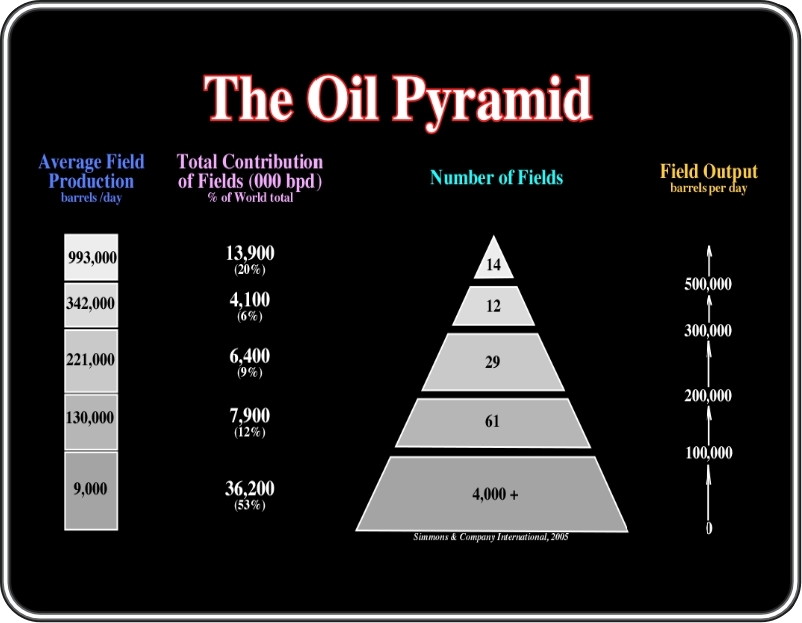
As illustrated, around 100 fields produce 50% of the reserves consumed per day. More than 95 percent of the fields produce less than 10.000 barrel per day and less of 1% produce more than 500.000 barrels per day. In other words, as said previously, in the world there are there 14 Kings (Ghawar being the King of Kings), 40 Queens, 61 Earls or Lords and quite a larger number (> 4.000) of Commoners or Peasants.
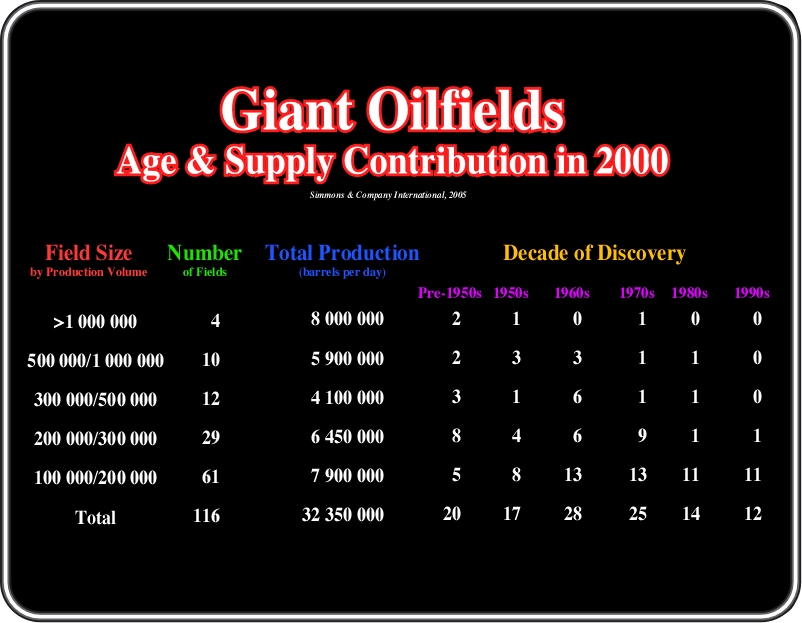
From the 116 fields producing around 50% of the world consumption per day, that is to say, 33 Mb/d, the large majority was found before the 70s. Also, it is quite evident that since long time (1950s), any field, with a diary production higher than 1 Mb/d, was found. In other words, (i) since the 50s, all petroleum basins were known and explored and so they can be considered as mature, or overmature at the exploration standpoint. Since the 90s, with exception of deepwater South Altantic Margins, where few fields with a potential of 200-300k barrels per day have been found, the picture stays roughly the same, as we will see later.
to continue press
next
Send E-mail to carloscramez@gmail.com or to carlos.cramez@bluewin.ch with questions or comments about this conference.
Copyright © 2006 CCramez
Last modification:
August, 2014